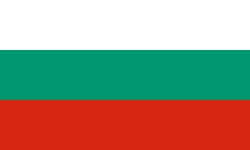Oskari Friman
| Oskari Friman | |
|---|---|
 | |
| Narození | 27. ledna 1893 Luzhayka |
| Úmrtí | 19. října 1933 (ve věku 40 let) Vyborg |
| Místo pohřbení | Vyborg |
| Povolání | zápasník |
| Některá data mohou pocházet z datové položky. | |
| Přehled medailí | ||
|---|---|---|
| zlato | LOH 1920 | zápas ř.ř., pérová váha |
| zlato | LOH 1924 | zápas ř.ř., lehká váha |
| Mistrovství světa v zápasu řecko-římském | ||
| zlato | MS 1921 | lehká váha |
Oskar David „Oskari“ Friman (27. ledna 1893 Usadišče, Ruské impérium – 19. října 1933 Vyborg, Sovětský svaz) byl finský zápasník, reprezentant v zápase řecko-římském.
V roce 1920 na olympijských hrách v Antverpách a v roce 1924 na hrách v Paříži vybojoval zlatou medaili. V roce 1921 zvítězil v lehké váze (67,5 kg) na mistrovství světa. Třikrát byl šampionem severských zemí a jedenáctkrát vybojoval finský titul.
Během své kariéry i po jejím skončení se živil jako řezník a klempíř. Po skončení aktivní kariéry působil také jako hlavní trenér finského a švédského národního týmu.
Externí odkazy
 Obrázky, zvuky či videa k tématu Oskari Friman na Wikimedia Commons
Obrázky, zvuky či videa k tématu Oskari Friman na Wikimedia Commons - Oskari Friman v databázi Olympedia (anglicky)
Média použitá na této stránce
Olympic Rings without "rims" (gaps between the rings), As used, eg. in the logos of the 2008 and 2016 Olympics. The colour scheme applied here was specified in 2023 guidelines.
Olympic Rings without "rims" (gaps between the rings), As used, eg. in the logos of the 2008 and 2016 Olympics. The colour scheme applied here was specified in 2023 guidelines.
Finská vlajka
Autor: F l a n k e r, Licence: CC BY-SA 2.5
Flag of the Kingdom of Sardinia (1851-1861) and of the Kingdom of Italy (1861-1946). Use: Civil flag and ensign. In a governmental or a military context, the crowned version (see Crowned version) was always used (as State flag and naval ensign).
Autor: F l a n k e r, Licence: CC BY-SA 2.5
Flag of the Kingdom of Sardinia (1851-1861) and of the Kingdom of Italy (1861-1946). Use: Civil flag and ensign. In a governmental or a military context, the crowned version (see Crowned version) was always used (as State flag and naval ensign).
this is the flag of the Soviet Union in 1936. It was later replaced by File:Flag of the Soviet Union (1955-1980).svg.
(c) I, Cmapm, CC BY-SA 3.0
The flag of the Soviet Union (1955-1991) using a darker shade of red.

(c) I, Cmapm, CC BY-SA 3.0
The flag of the Soviet Union (1955-1991) using a darker shade of red.

Autor: Scroch, Licence: CC BY-SA 3.0
Flag of Bulgaria (1971-1990). Flag of Bulgaria with Bulgarian coat from 1971.
Autor: Scroch, Licence: CC BY-SA 3.0
Flag of Bulgaria (1971-1990). Flag of Bulgaria with Bulgarian coat from 1971.
Flag of Second Polish Republic and later People's Republic of Poland in period from March 29, 1928 to March 10, 1980. Red shade used here is HTML "vermilion" #E34234. Proportion 5:8.
Flag of Second Polish Republic and later People's Republic of Poland in period from March 29, 1928 to March 10, 1980. Red shade used here is HTML "vermilion" #E34234. Proportion 5:8.
Flag of South Korea from October 1997 to May 2011. In May 2011, the exact colors were specified into their current shades.
Flag of Iran. The tricolor flag was introduced in 1906, but after the Islamic Revolution of 1979 the Arabic words 'Allahu akbar' ('God is great'), written in the Kufic script of the Qur'an and repeated 22 times, were added to the red and green strips where they border the white central strip and in the middle is the emblem of Iran (which is a stylized Persian alphabet of the Arabic word Allah ("God")).
The official ISIRI standard (translation at FotW) gives two slightly different methods of construction for the flag: a compass-and-straightedge construction used for File:Flag of Iran (official).svg, and a "simplified" construction sheet with rational numbers used for this file.
Variant version of a flag of Japan, used between January 27, 1870 and August 13, 1999 (aspect ratio 7:10).
Flag of Romania, (21 August 1965 - 22 December 1989/officialy 27 December 1989).

Construction sheet of the Flag of Romania as depicted in Decree nr. 972 from 5 November 1968.
- l = 2/3 × L
- C = 1/3 × L
- S = 2/5 × l
Flag of Romania, (21 August 1965 - 22 December 1989/officialy 27 December 1989).

Construction sheet of the Flag of Romania as depicted in Decree nr. 972 from 5 November 1968.
- l = 2/3 × L
- C = 1/3 × L
- S = 2/5 × l
Flag of the Socialist Federal Republic of Yugoslavia (1946-1992).
The design (blazon) is defined in Article 4 of the Constitution for the Republic of Yugoslavia (1946). [1]
Flag of the Socialist Federal Republic of Yugoslavia (1946-1992).
The design (blazon) is defined in Article 4 of the Constitution for the Republic of Yugoslavia (1946). [1]
Bundesdienstflagge (Flag of the federal authorities of Germany). Under German law, federal states, municipalities, institutions or private persons are not allowed to use this flag.
Georgian flag in Pantone MS.
Flag of South Korea (1949-1984)
Friman OskarDavid Wrestle
Flag of Hungary, from 6 November 1915 to 29 November 1918 and from August 1919 until mid/late 1946.



































